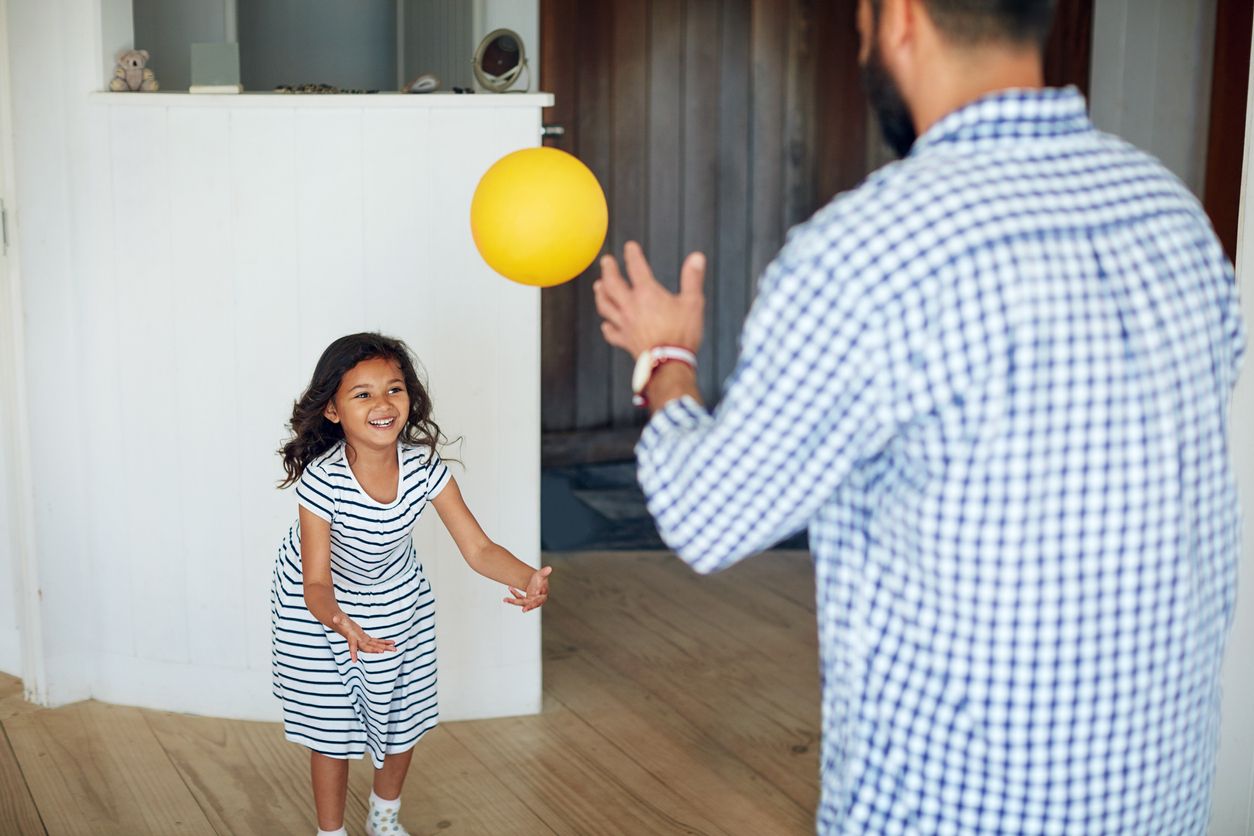Learning to catch or hit a ball and learning to become an effective parent have many similarities. Both require considerable practice, accompanied by patient teaching. In the process, many mistakes are inevitable.
A Mother’s Letter
Recently I received this letter from a woman who is practicing being a Ridiculously Effective Parent:
I feel like you and I are playing ball outside in the yard, father and daughter. You’re teaching me how to catch and hit a ball. At first you gently toss me a small, soft rubber ball, and I try to catch it. In the beginning it’s hard, and most of the time I miss it entirely, or it bounces off my hands, falling to the ground. But I keep practicing, and you keep teaching me patiently, so eventually I learn to catch a soft ball that is gently tossed in my direction. Then I learn to hit the ball with a plastic bat. I miss the ball a lot before I can consistently hit it, even though you are tossing it gently in front of me. Then you throw the ball harder. Then a hard ball, not a soft rubber one. Then curve balls and sliders and knuckle balls. Each time you throw something different, or in a different way, it’s a bit surprising, even scary. Gradually I learn to catch the balls and hit them, always after a lot of practice. I like it that you’re loving and teaching me. I like it that you’re giving me the instruction that I sometimes wish I had received as a child.
You are Learning to be a Parent
Read again the letter above. Consider how you’re in a similar position as you learn to become an effective parent. That ability rarely if ever comes naturally. We need to see it done. We need to be taught. We need to practice and be supported while we make innumerable and inevitable mistakes in parenting—just as we need loving and teaching before we can hit a ball.
Teaching Your Children
Moreover, teaching our children how to feel loved, and how to be loving and responsible, can be very much like teaching them to catch and hit a ball. We need to start off with simple instructions, both (1) because that is all they can handle, and (2) because we want to limit the disappointments and discouragement that would result if we pushed too much on them too soon.
Then we teach them how to handle a ball moving faster, or with a curving trajectory, or when it bounces at them after hitting the ground in front of them.
We send them off to practice in other situations, where we are not there to guide them, and there will be occasions when a ball bounces off the ground, or curves erratically, and they are hit in the leg, or arm, or face.
Then we’ll support them, love them, and teach them, but we cannot rescue them from every difficult ball thrown in their direction. They have to learn to handle difficult situations, or they can’t grow.
Explain to your children the metaphor we’ve discussed. Explain that you’re not here to catch or hit every ball that is thrown at them. We’re here to teach them what to do in as many circumstances as possible—with increasing difficulty.
When they complain that things are too hard, rarely is the solution to ease their pain. Our responsibility is to love and teach precisely so they can catch and hit balls that are increasingly tough to handle.
When they know this, they’ll tend to accept our loving and teaching with greater ease, and they’ll be grateful for the help, rather than insisting on being rescued—or giving up.
Summary
If we stay with it the process, and especially if our instructors are effective, we can learn to handle more and more difficult balls.
This is an example of how to approach such a child.
The principles that guide our learning to catch and hit a ball can easily be applied to our learning to be effective parents. We also need to teach our children the same principles: practice, responsibility, learning from mistakes, and persisting through the wide array of inevitable difficulties they had never imagined.


